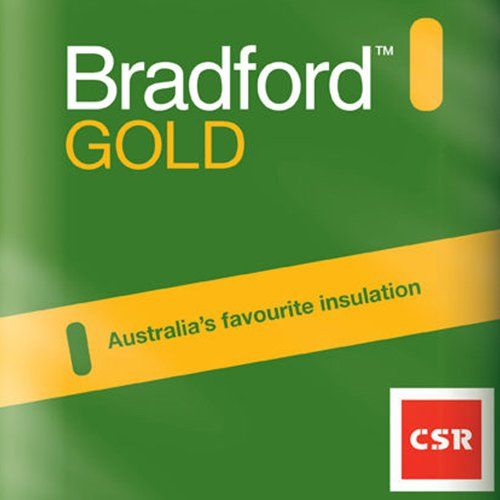Wall Insulation BATTS
Wall insulation batts improve indoor comfort and reduce energy bills. They create a thermal barrier that keeps Melbourne homes cool in summer and warm in winter. These batts are made from durable materials designed to last and are easy to install.
Compared to other insulation types, wall batts are cost-effective and deliver consistent performance. They fit snugly between wall frames, providing excellent thermal and acoustic insulation. With wall insulation batts, you invest in long-term energy efficiency and comfort.
Wall Insulation Batts Video
Wall Insulation Installation Services in Melbourne
Ensuring your home is energy-efficient and comfortable year-round is essential in Melbourne's diverse climate. Wall insulation services play a crucial role in maintaining indoor temperature, reducing energy bills, and enhancing overall living comfort. At Construct Ramsay, we specialise in providing top-notch wall insulation solutions tailored to meet the unique needs of Melbourne homes. Our expert team is dedicated to delivering high-quality insulation that promises long-term benefits and sustainability. Find Out More
Bradford Wall Insulation
The Bradford Gold wall insulation is built specifically to offer superior performance in the exterior cavity walls. With the Bradford Gold wall insulation batts, it is possible to lower the amount of energy required for heating and cooling. The Bradford batts are built for Australian conditions and offer improved comfort all through the year. It helps with saving on energy costs and lowers greenhouse gas emissions. The batts are designed to adhere to the highest standards, and with the range, you can keep your home warm in winter and cool in summer.
Benefits of Our Wall Insulation Batts
Energy Savings
Reduce heating and cooling costs with high-performance insulation.
Enhanced Comfort
Enjoy a more consistent indoor temperature throughout Melbourne’s changing seasons.
Superior Soundproofing
Minimise noise transfer from outside or between rooms, creating a quieter home.
Eco-Friendly Materials
Many of our batts are made from recycled glass and sustainable materials, reducing environmental impact.
Increased Home Value
Improving your home’s energy rating makes it more attractive to future buyers.
Why Choose Construct Ramsay for Wall Insulation in Melbourne?
Construct Ramsay provides premium wall insulation batts backed by decades of experience. Our products meet Australian building standards and are perfect for residential and commercial projects.
High-Quality Products
We only supply high-performance batts for superior insulation.
Expert Advice
Our team provides tailored guidance to help you choose the best insulation for your Melbourne home or business.
Fast & Reliable Service
We ensure quick delivery and efficient service across Melbourne.
Sustainable Solutions
We offer environmentally friendly insulation options, reducing carbon footprints.
Trusted Supplier
Construct Ramsay is a reputable insulation provider, committed to customer satisfaction.
Contact Construct Ramsay today for expert advice and high-quality wall insulation batts in Melbourne. Call us now or request a quote online!
Additional Insulation Services We Offer
In addition to high-quality wall insulation batts, Construct Ramsay provides a range of insulation solutions to enhance energy efficiency and comfort in Melbourne homes and businesses. Our services include ceiling insulation batts to minimise heat loss through the roof, roof insulation batts for year-round temperature control, and insulation installation services to ensure professional and effective installation. Whether you're upgrading your existing insulation or building a new home, our team is here to help you achieve the best energy savings and comfort possible.
FAQs About Wall Insulation Batts
What materials are wall insulation batts made from?
They are typically made from glass wool, polyester, or natural fibres, all offering durability and excellent insulation.
Are wall insulation batts easy to install?
Yes. They are pre-cut to fit standard wall frames, making them simple to install for both professionals and DIYers.
How do wall batts reduce noise?
Wall batts absorb sound waves, reducing noise transfer between rooms and from outside.
What R-value should I choose for Melbourne homes?
For Melbourne, R2.5 to R2.7 is commonly recommended for optimal thermal performance.
Are wall insulation batts fire-resistant?
Yes. They comply with Australian fire safety standards and are designed to resist ignition.
Do you offer eco-friendly options?
Yes. Many of our batts are made from recycled materials and are recyclable themselves.
How long do wall batts last?
Wall insulation batts can last for decades with proper installation, maintaining their performance.
What thickness do wall insulation batts come in?
They are available in various thicknesses, typically ranging from 75mm to 90mm, depending on your needs.
Can wall insulation batts prevent mould?
Yes. They help regulate indoor temperature, reducing condensation that can lead to mould growth.
What is the difference between ceiling and wall insulation?
Ceiling insulation focuses on controlling heat loss and gain through the roof, while wall insulation improves the thermal and acoustic performance of walls.









